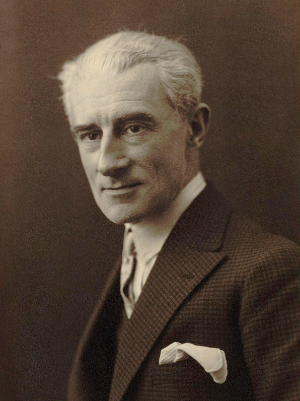
Maurice Ravel
French composer and pianist, was born on March 7, 1875, in Ciboure, France. Ravel is a prominent figure in 20th-century classical music and is renowned for his meticulous craftsmanship and innovative composition approach.Ravel displayed musical aptitude early on and entered the Paris Conservatoire at the age of 14. His studies there exposed him to a diverse range of musical influences, from the impressionist works of Claude Debussy to the structured elegance of earlier French composers. Ravel’s early compositions already demonstrated a keen sense of color and texture.
One of Ravel’s breakthrough works was his orchestral piece “Pavane pour une infante défunte” (Pavane for a Dead Princess), which he composed in 1899. This composition began his distinctive style, characterized by evocative harmonies and a penchant for drawing inspiration from literature, visual art, and folk music.
Ravel’sreputation as a master orchestrator grew with works like “Rapsodie espagnole” and “Ma Mère l’Oye” (Mother Goose). His compositions often showcased his fascination with exoticism and his ability to create rich, atmospheric soundscapes. “Daphnis et Chloé,” a ballet with a sumptuous orchestral score, exemplifies Ravel’s mastery.
One of his most famous compositions, “Boléro,” composed in 1928, is a crescendo of orchestral intensity and rhythm featuring a single, insistent theme repeated and built upon. This piece, though deceptively simple in structure, highlights Ravel’s skill in orchestration and his ability to create a mesmerizing and memorable musical experience.
Ravel’s piano compositions, such as “Miroirs” and “Gaspard de la nuit,” showcase his virtuosic pianism and innovative harmonic language. His piano suite “Le Tombeau de Couperin” pays homage to the Baroque era while incorporating Ravel’s unique flair.
Though Ravel’s output was less extensive than some of his contemporaries, each composition was meticulously crafted. His meticulous nature and perfectionism contributed to his small but highly esteemed work.
Ravel’s life unfolded during significant cultural and political upheaval, including World Wars. Despite his frail health and challenges from his refusal to align himself with any specific musical movement, Ravel remained dedicated to his artistic vision.
His final years were marked by declining health, and he succumbed to complications following brain surgery on December 28, 1937. Maurice Ravel left behind a legacy of musical innovation, and his compositions continue to be celebrated for their precision, elegance, and lasting influence on the landscape of classical music.
